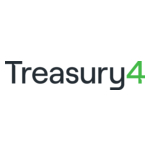Sibos 2017: collaboration vital to avoid dinosaur status
The question of whether – and in what form – banks will survive in the future depends largely on how the forces of changing customer behaviour, technology and regulation will play out on different types of banks.
Asked in a poll during yesterday’s (16 October) session on the future of banks what types of organisations banks would be in ten years, most delegates viewed themselves as “sharks” – predators that will aggressively attack these forces and seek to be innovators.
Session host, Thomas Olsen, partner at Bain & Company, had given delegates three options: sharks, cockroaches (banks that adapt and find small niches, or retreat to home markets, not necessarily leading as innovators) and dinosaurs (banks that are slow moving in how they react and at increased risk of extinction).
Alexander Bazarov, senior vice-president, co-head Sberbank CIB and a member of the bank’s executive board said: “Out of the options – none of which is appealing – being a cockroach is probably the best. I see myself more as a dolphin – with some features of a shark, but friendlier and more cheerful.”
Olsen observed that evolution is about survival of the fittest and asked Bazarov if banks had predators. Bazarov responded: “Strategically survival is a very simple choice. Obviously, no one chooses to be extinct or a dinosaur. Evolution is a survival game; you stay small or try to lead the change.”
Sberbank believes different groups of players – all with huge amounts of information about their users – will merge in the future: ecommerce providers, internet companies, including search engines, mobile operators, and banks. “We all have information and know something the others don’t.”
Banks can be in the centre of the future banking ecosystem but there are strategic questions to answer, including whether they have the resources, capacity, skills, knowledge and determination to be in the middle. If they don’t – and not everyone can be – they should accept a position as a niche player, he added.
Frantz Teissedre, head of interbank relationships, Société Générale, said at last year’s Sibos, financial technology companies were presented as foes. “Now it seems things are really different – we understand each other. It is common sense because banks know their customers and the regulatory environment while fintechs bring creativity, agility and concepts for customers. But banks are innovators, too. At Société Générale, we have been doing account aggregation for the past ten years. The difference is, on top of internal banking innovation, fintechs provided a unique opportunity to accelerate this innovation. It means cost savings, commercial synergies and improved customer loyalty. These partnerships have strong value.”
For regulators, fintechs have great ideas, capabilities to develop these ideas and prospective customer bases. However, regulators can sometimes be perceived as slowing down the process of innovation, said Petra Hielkema, division director payments and market infrastructure at De Nederlansche Bank. On the other hand, there are many smaller payment services providers who appreciate the help regulators can provide in being non-political. “We have to accept not every fintech or new company will make it, but that’s not a reason for them not to start out. We also have a sandbox to allow companies to come and look at the ideas behind specific regulations and find a way to develop their products to be compliant. We don’t have hundreds knocking on our door, but everyone is welcome.”
Delegates were asked at the end of the session what would be the biggest obstacles to bank survival in the future. Few opted for the ability to attract talent – a mistake as far as Bazarov and Tom Eck, chief technology officer, IBM industry platforms, were concerned. Bazarov said it was a key challenge and if he were 30 years younger, he would not go into banking. Eck reckoned the audience “got the poll wrong. I am trying to recruit people now. The best AI programmers in the world are making NFL quarterback salaries. Supply and demand. Digital technology is moving so fast universities can’t churn out enough people who know this stuff.”
Follow us on Twitter @DailyNewsSibos
Read all the latest news and views from Sibos 2017 online here or pick up a free print copy of Daily News at Sibos if you are at the conference!













































